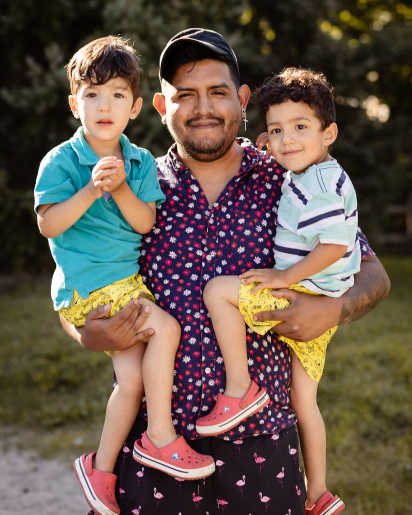An Immigration System for Canada’s Future
-A plan to get us there

Canada is a destination of choice for people from all over the world looking for a new place to work, study and build their lives. Our rich culture and diversity is a reality, at least in part, because of our immigration policies. Our tradition of protecting the world’s most vulnerable people and acting as a global leader in refugee resettlement has earned Canada immense respect on the world stage.

In order to maintain our status as a strong multicultural country, and as a destination of choice, our immigration system of the future must be nimble and better meet the needs of our country and of newcomers.
This includes attracting and retaining the people we want and need, ensuring communities can absorb and support them, and maintaining the integrity of Canada’s borders. It means aligning our programs with labour market needs, and taking a whole-of-government, whole-of-society approach to immigration.
What follows is a list of actions to improve Canada’s immigration system. It captures months of purposeful conversations with Canadians and experts, as well as the most recent research insights and policy thinking on the future of our immigration system. Some changes are already underway, others are in development.
We are pleased to share the path forward with you.
Create a more welcoming experience for newcomers

The Government of Canada is working to deliver a pleasant and user-friendly experience for all those who use our services—both in Canada and abroad. To compete for global talent, we must be modern and efficient, fair and transparent, predictable, and timely.
A new state-of-the-art operating platform, Digital Platform Modernization (DPM), will underpin these efforts. This new digital platform will maximize efficiency and allow us to better meet the unprecedented level of demand to work, study, visit, and live in Canada. DPM will bring new capabilities—such as an online single window into immigration programs, enhanced automation and digital self-service—and will transform the way we do business. It will speed up processing and improve program integrity, while making the immigration journey clearer and more human focused.
Although it will bring rapid and real improvement, we are not waiting until the new operating platform is available to improve on what we do. The people who use Canada’s immigration system are more than applicants or file numbers; they are individuals, families, and employers making life changing decisions. The way we deliver services must first and foremost reflect this.
We will work to make the immigration system more facilitative, and ensure newcomers have an understanding and respect for the integral role Indigenous Peoples have played in Canada’s past, present and future.
By improving on how we welcome newcomers, we will further strengthen our labour force, and grow our population to enrich and empower our communities. A welcoming and efficient immigration system does not mean compromising safety and security. In fact, it means more effectively allocating resources to strengthen and streamline our processes, while we maintain the integrity of Canada’s borders.
These efforts will bolster the integrity of the immigration system, and the system’s reputation as one that reflects fairness and equity, while maintaining public health, safety and security.
Actions
Reduce wait times and improve service standards
- Get application processing times back to service standards for key programs, and re-evaluate them
- IRCC has made several key investments to boost operational processing capacity and address backlogs, including technological improvements and hiring over 1,200 officers during 2022-2023. We will continue to work towards achieving the stated processing standards, so that applicants can obtain an immigration decision in a timely and predictable manner. Further, IRCC is committed to reviewing current service standards with a human-centric lens to ensure that Canada remains competitive globally.
- Embrace digital tools that allow officers to process requests from different parts of the world more effectively, and the use of Advanced Analytics to automate some determinations for routine cases while ensuring there is no built-in bias.
- Align application intake with available admissions spaces, to prevent years-long waits that applicants can experience when demand far exceeds available spaces. Reducing wait times through admissions intake management will allow applicants and their support networks to better plan for their arrival, making it easier for them to settle and integrate in Canada.
- Expedite visitor visas, with benefits for tourism, major conferences and events. As of June 6, 2023, 13 more countries have been added to a partial visa exempt countries list. Now, travellers from 67 countries can apply for an electronic travel authorization (eTA) instead of a visa with most eTA applications approved within minutes. We are also committed to ensuring priority visa processing so those from all over the world attending major conferences and events in Canada that are registered with IRCC, make it there on time.
Help remove barriers to welcoming in the people we need for the future
- Examine the Immigration and Refugee Protection Act (IRPA) to assess the need for legislative amendments or reform. The legislation that stands up most of IRCC’s programs, policies, and procedures, IRPA came into force in 2002. At the time, it was the first major legislative change to Canada’s immigration system in 25 years. We must ensure the legislation continues to reflect the goals of our immigration system, and that it provides a sufficiently flexible framework to meet them while keeping Canadians safe.
- Tackle barriers in accessing the international student program, including for Francophone applicants from sub-Saharan Africa. We will develop a pilot with select post-secondary institutions to address barriers faced by students in meeting the financial requirements for study permits and to facilitate applicants destined to institutions in Francophone minority communities
Strengthen partnerships with employers and institutions that rely on immigration, while addressing fraud and strengthening student and worker protections.
- Launch Letter of Acceptance (LOA) Verification. IRCC will strengthen its fraud prevention measures with the introduction of a new mandatory requirement for international student letters of acceptance to be verified directly between IRCC and all designated learning institutions.
- Implement a Recognized Institutions Framework. IRCC will adopt a Recognized Institutions Framework with qualifying universities and colleges. The Framework will be developed in close consultation with designated learning institutions, provinces and territories. These post-secondary institutions will benefit from faster processing of study permits, if they achieve higher standards across key performance indicators such as integrity, student supports such as housing, and sustainable intake of students.
- Implement the Recognized Employer Pilot. On August 8, 2023, Employment and Social Development Canada (ESDC) launched a Recognized Employer Pilot for repeat employers who meet compliance standards in occupations with a demonstrated labour shortage. Qualifying employers will receive several benefits, including streamlined Labour Market Impact Assessment (LMIA) application processing. This complements ongoing work to increase protections for foreign nationals under the Temporary Foreign Worker Program (TFWP), including rebuilding the compliance regime to improve the quality and reach of inspections.
Improve communications and ensure a human-centric approach
- Build an advisory body with lived experience in immigration to guide policy development and improvements to service delivery. We will establish an advisory council of newcomers to provide advice from diverse perspectives and experience using Canada’s immigration system. This will strengthen policy and program development and anchor it in a human-centric approach.
- Make it easier for applicants to find the information they need.
- We will make IRCC’s website easier to navigate, and look to tools to make it more user-friendly—including an updated program finder tool.
- We will empower applicants by giving them more information about the status of their applications through ongoing service improvements. As of this spring, people can use the applications status tracker to find information about their applications for the sponsorship of a spouse, partner or child, for Express Entry, study permits, work permits, visitor visas, citizenship and passports through Service Canada. IRCC will begin simplifying the way applicants access their status information in their single window online account, starting with a subset of applicants this fall and expanding through 2024.
- Pursue opportunities to enhance the immigration experience for families.
- We will identify and explore solutions to potential barriers faced by families accessing and navigating Canada’s immigration system, such as reviewing ways to ensure equity considerations are built into policy and program changes and better support accompanying family members.
- We will consider lessons learned from understanding family compositions from various parts of the world, and implement more inclusive measures when possible.
- Streamline pathways and programs. We will look for opportunities to simplify complex pathways to reduce duplication and eliminate barriers. This would involve ensuring the compatibility between our programs, and identifying potential harmonies with provincial programming. We will also explore eliminating requirements of limited value to support faster processing of applications.
- Explore new opportunities to support employers, such as greater hands-on supports to employers looking to hire international talent, including small and medium-sized employers, who may require additional support and guidance, but who stand to gain exponential benefits from an increased reliance on immigration.
Make applications more user-friendly, using digital and virtual technologies
- Build a modern, digital, and data-driven online client experience. The Client Experience Platform will be the new online portal for applicants to access all of IRCC’s programs and services and to interact with the department. It will offer a more positive and personalized experience to those looking for information, applying for programs and services, and checking for updates on the status of their application(s). With this platform, we will begin rolling out a digital portal that will allow applicants and their representatives to send IRCC updated information about themselves or to respond to requests from officers for additional information or documents.
- Make it easier for Canadians to obtain or renew passports. As announced this spring, IRCC and ESDC will provide Canadians an option to apply online for adult passport renewals. IRCC will also streamline access to passports for newcomers being granted citizenship.
Continue to advance reconciliation as we welcome newcomers
- Consistent with the United Nations Declaration on the Rights of Indigenous Peoples Act Action Plan 2023–2028, pursue legislative amendments to the Immigration and Refugee Protection Act, amendments to relevant regulations and revisions to policies in order to address complex border crossing and migration challenges faced by Indigenous Peoples divided by Canada’s international borders, including options to amend Canada’s right of entry provision, and work and study permit requirements.
- Immigration, Refugees and Citizenship Canada will launch a new Citizenship guide that better reflects the history of systemic racism and discrimination faced by Indigenous Peoples. The guide will respond to the Truth and Reconciliation Commission’s Call to Action 93 by reflecting a more accurate and inclusive history of Indigenous Peoples to newcomers, including information about Treaties and the history and legacy of residential schools.
Align immigration with labour market needs

The Canadian labour market continues to grow and strengthen. This evolution brings unique challenges and opportunities. Immigrants have an important role to play in strengthening labour market resilience and growing our economy now and into the future. Not only does immigration help to address a declining worker to retiree ratio, it also helps to ensure Canada has the skills needed to meet the goals of our industrial policy, and that labour force gaps are not a barrier to the success and expansion of Canadian businesses.
Attracting and retaining the top talent we need across all sectors, from construction to green technology to health care, means identifying what skills are needed, who has these skills, and how to best match them to available jobs in Canada. This includes providing more opportunities for international students and temporary workers with in-demand skills to stay in Canada.
In addition, the recent launch of changes to Express Entry to better select workers who match specific in-demand skills and experience, will act as a catalyst for growth, help to address labour needs, and strengthen Francophone communities. This year, category-based selection invitations will focus on candidates with strong French language proficiency, as well as candidates with work experience in health care, STEM professions, transport, agriculture and agri-food and trades such as construction. Candidates with experience in trades such as carpentry, plumbing and welding, would add more workers to Canada’s home building sector.
Whether people come as skilled economic immigrants, refugees, or arrive under family streams, they bring with them a variety of skills and talent that we must harness to help our communities grow.
Actions
Maintain Canada’s global competitiveness in attracting and retaining top talent
- Create the new role of a Chief International Talent Officer to align Canada’s immigration policies with a long-term skills and labour strategy.
- The innovator in this role will be tasked with leveraging information about the skills needed for the future, and ensuring that immigration better aligns with Canada’s labour market and sectoral strategies.
- The government will develop a comprehensive approach to mapping future skills needs that will be strongly linked to sectoral strategies, such as agriculture and health human resources, and will take into account regional needs as well as the needs of Francophone minority communities.
- Global skills missions will be organized in collaboration with government representatives, employers and stakeholders, to recruit the talent Canada needs.
- Implement the first-ever tech talent strategy which includes an open work permit for H-1B visa holders to bolster the strength of the North American tech sector, a digital nomad strategy to promote Canada as a remote work destination with the possibility to remain upon receipt of a job offer, and development of additional options for highly talented individuals to come to Canada to work with or without a job offer. This momentum will drive future collective efforts to attract and retain workers who can contribute to Canada’s economy.
- Continue to improve the Start-Up Visa Program including prioritizing applications that are supported by venture capital, angel investor groups and business incubators and have capital committed, along with applications that are supported by business incubators that are members of Canada’s Tech Network.
- Focus on international students with high-demand skills. Explore new measures to better transition international students to the labour force in alignment with the International Education Strategy led by Global Affairs Canada, by enhancing connections between students, post-secondary institutions and employers, including work-integrated learning within the International Student Program and updating the Post-Graduation Work Permit Program to support critical sectors, as well as marketing high-demand skills and sectors to prospective international students.
- Working with partners, improve foreign credential recognition to enable more newcomers to apply their skills. Enhance efforts to ensure newcomers understand what is needed to have their credentials recognized in Canada, and encourage them to begin the process as soon as possible. The government will promote awareness of programs that provide financial assistance, including loans, to help newcomers with the costs associated with the credential recognition process. We will strengthen the connection between permanent resident selection and foreign credential recognition to help ensure that individuals who are selected for their ability to work in a regulated occupation can do so as soon as possible.
- Bring workers to Canada who can help alleviate social pressures in key areas like housing and health care, using dedicated Category-Based Selection draws in Express Entry.
Develop a comprehensive and coordinated growth plan

Welcoming newcomers is not just about the number of people we welcome, but must also take into account supports and services required by newcomers and Canadians alike, including housing and healthcare. Key to an effective newcomer welcome plan will be ensuring that the benefits of immigration are spread out across the country.
In addition to broad national programs, regional economic programs like the Atlantic Immigration Program (AIP), are important to sustain growth and support our economic recovery. We have also seen great success with the Rural and Northern Immigration Pilot in participating communities.
Enhancing the vitality of Francophone minority communities is also an integral part of IRCC's mandate, and the government has committed in the new Official Languages Act to restore and increase the demographic weight of Francophone minority communities.
Recent changes to the Express Entry system also give us the ability to specify particular attributes, so we can better target candidates to receive invitations to apply to come to Canada permanently.
Planning for newcomer arrivals, also means planning for the unknown, such as global events that result in new humanitarian crises. Canada has a long history of welcoming people facing crisis situations, however recent flows of refugees and displaced persons have presented new challenges to processing and facilitation of individuals and families, and to the communities who receive them. According to the UN Refugee Agency (UNHCR) in 2022, the world reached a dramatic milestone with more than 100 million people forcibly displaced. The government needs an established plan in order to react quickly and equitably to crisis situations, with a good line of sight on emerging situations.
Coordination, collaboration, communication and partnerships are instrumental to welcoming newcomers, and ensuring that appropriate supports are in place to help them achieve positive outcomes.
Actions
Build a more whole-of-government approach to immigration growth
- Seek to integrate housing and health care planning, along with other important services, into planning Canada’s immigration levels. IRCC leads on an annual plan to project how many new permanent residents Canada will welcome in the following year(s). We will explore options to develop a more integrated plan to coordinate housing, health care and infrastructure between federal government departments, and in close collaboration with provinces, territories and municipalities. There is an increasing need to have a plan that reflects newcomers with both permanent and temporary resident status and takes into account the supports required to welcome them into our communities. We will also increase collaboration and engagement with First Nations, Inuit and Métis Peoples, stakeholders and communities across Canada.
Support communities
- Examine opportunities to better target support for the settlement and integration of newcomers. We want to provide the right services at the right time. As part of the upcoming call for proposals for settlement service providers, we will look for opportunities to fund initiatives that enhance community partnerships and increase services in mid-size, rural and northern areas, increase access to digital settlement services and expand services by Francophones for Francophone newcomers in official-language minority communities outside of Quebec.
- Explore options to leverage the investment of those coming to Canada in order to support more affordable housing. Building on best practices, explore and adapt an immigration pathway for foreign nationals committed to investing in and building net new housing in Canada. Rigorous design and monitoring for compliance would ensure that benefits are fully realized.
- Explore opportunities to enhance regional immigration, supporting welcoming communities across Canada.
- Includes better understanding the unique needs and strengths of smaller, rural and Francophone minority communities and exploring opportunities for growth.
- IRCC will seek to make the Rural and Northern Immigration Pilot (RNIP) a permanent program including assessing options to expand it to more communities, with particular attention to the needs of Francophone communities. RNIP is a community-driven program designed to spread the benefits of immigration to smaller communities by creating a path to permanent residence for workers who want to work and live in participating communities.
- We will also develop an ambitious new Francophone Immigration Policy to enhance the vitality of Francophone minority communities and work toward restoring and increasing their demographic weight. The policy will boost promotion and selection efforts as well as support the settlement and integration of French-speaking immigrants in Francophone minority communities. The policy will include a framework for setting ambitious yet attainable targets to increase the number of Francophone admissions on an ongoing basis.
Position the immigration system to adapt quickly and to respond equitably and sustainably to growing global humanitarian crises
- Develop a crisis response framework that includes a transparent and evidence-based assessment mechanism to inform when a rapid immigration response is triggered for foreign nationals in need of urgent protection. The framework would include a toolkit to support government responses that can be tailored to each unique situation, and well-informed, consistent and equitable decision making, and informed by lessons learned. This will help increase information sharing among government and civil society partners, who are critical in supporting response efforts on the ground. As part of the crisis response framework, we will develop a special measures model for people affected by natural disasters or other crises within Canada, including replacement of Canadian citizenship and immigration documents, priority processing of in-country applications, and extension of temporary resident status.
- Develop a global incident response team, working in close collaboration with Global Affairs Canada and the Department of National Defence to better anticipate, assess and manage emerging crises. We will also develop a skills inventory of public servants who can provide surge capacity as needed. This will enable the Government of Canada to respond quickly and equitably to new humanitarian crises while mitigating impacts on operations in other areas. Effective response, coordination and communication will also help communities who play vital roles in welcoming newcomers seeking protection.
- Partner with organizations working on the ground to refer people to Canada in need of humanitarian and other pathways. Recently we doubled the number of Human Rights Defender (HRD) spaces to 500, and we entered into a partnership with ProtectDefenders.eu and Front Line Defenders, two organizations with a global reach who are now able to directly refer human rights defenders in need of protection. We are exploring options to further expand the HRD program, including ways to provide temporary protection. On June 8, the Prime Minister announced that the Canadian organization Rainbow Railroad has become a referral partner for 2SLGBTQI+ Government-Assisted Refugees. This partnership complements Canada’s long-standing referral partnership with the UNHCR, and strengthens Canada’s ability to resettle at-risk 2SLGBTQI+ refugees from around the world. IRCC is working to further diversify Canadian referral partners, which will allow Canada to be more inclusive in our humanitarian responses. Additionally, IRCC will further diversify referral partners for the Economic Mobility Pathway Pilot (EMPP) which is an economic pathway to help employers hire skilled refugees and other displaced individuals.
- Explore options to enable the asylum system to better manage higher claim volumes and help ensure that claimants are met with a process that is fast, fair and final. Record levels of forced migration globally have led to higher volumes of asylum claims in Canada. We will continue to look for ways to improve system resilience and processing capacity, reduce wait times and improve services to those seeking asylum to ensure a human approach with consideration for their situations, while also maintaining border integrity. We will work with provinces, territories and municipalities to ensure a well managed and supported approach.


Conclusion
This report, An Immigration System for Canada’s Future, and the engagement exercise it reflects marks the conclusion of formal engagement sessions, but the beginning of a transformation to Canada’s immigration system. As our society continues to evolve and new realities emerge, so too will our immigration programs and policies.
In order to seize opportunities that come with change, we have to be nimble and continue to innovate and adapt. This cannot happen in isolation. It’s through partnership and staying connected that we share information, become aware of emerging issues and find solutions.
We all have an important role to play in what is a national effort to welcome newcomers and help set them, and our communities, up for success.
We commit to staying connected, and keeping the lines of communication open.
Our work together continues.

The photos used in this section of the report are from a photographic project “ We are all immigrants” by digital photographer Oskar Dap. Oskar was born in Cali, Colombia. He now lives and works in Ottawa, and became a Canadian citizen on May 27, 2023, in a ceremony held as part of Citizenship Week.
Background on “We are all immigrants” exhibit
In the words of Oskar Dap: The photographic project puts forward the faces and realities of migration to promote an inclusive and diverse narrative of immigration. This exhibit reflects on what immigration is and what defines us as a multicultural society.